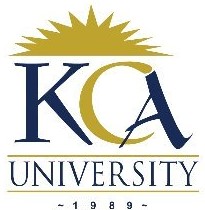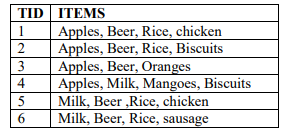
UNIVERSITY EXAMINATIONS: 2018/2019
EXAMINATION FOR THE DEGREE IN BACHELOR OF SCIENCE IN
INFORMATION TECHNOLOGY/
BACHELOR OF BUSINESS INFORMATION TECHNOLOGY
BIT 3201/BBIT 300: DATA WAREHOUSING AND DATA MINING
MODE: DISTANCE LEARNING
ORDINARY EXAMINATIONS
DATE: AUGUST.2019 DURATION: 2 HOURS
INSTRUCTIONS: Answer question ONE and any other TWO questions
QUESTION ONE [30 MARKS]
a) Differentiate between ordinal and nominal variable.
4 Marks
b) Describe any THREE data cleaning methods
3 Marks
c) Define the concept of data warehouse.
3 Marks
d) In the context of data warehousing what is data transformation?
3 Marks
e) Differentiate between slice and dice operations in OLAP.
4 Marks
f) Discuss the characteristics of a data ware house.
4 Marks
g) Explain the use of the knowledge base in a data mining system.
5 Marks
h) Differentiate fact table and dimension table.
4 Marks
QUESTION TWO [20 MARKS]
a) Briefly explain the concept of data scrubbing.
4 Marks
b) Association rules analysis is a technique to uncover how items are associated to each other. There are
three common ways to measure association: confidence, support and lift. Study the following
transaction table and answer the questions that follow.


i. Calculate and explain the confidence of {Milk->Biscuits}
3 Marks
ii. Calculate and explain the support for Milk.
3 Marks
iii. Calculate and explain the lift of {Milk->Biscuits}
4 Marks
c) Discuss the role of Apriori principle in association rule mining.
6 Marks
QUESTION THREE [20 MARKS]
a) Describe the generic steps in classification method in data mining
6 Marks
b) Clustering, in data mining, can be defined as a process of partitioning a set of data (or objects) into a
set of meaningful sub-classes, called clusters. In this regard, describe any four requirements for
clustering.
4 Marks
c) Discuss any FOUR issues used to measure the performance of a data mining system.
4 Marks
d) Discuss at least SIX steps involved in data warehousing.
6 Marks
QUESTION FOUR [20 MARKS]
a) Explain the difference between Association rule mining and frequent item set mining
4 Marks
b) Briefly discuss THREE schemas for OLAP systems.
3 Marks
c) Differentiate between descriptive and predictive data mining tasks. Give two examples for each.
5 Marks
d) Given two objects represented by the tuples (4,1,4,9) and (2,6,3,5) calculate the following distances
between the two objects. Calculate the minkowski distance if p=3.
6 Marks
e) Explain why it is advisable to separate a data warehouse from operational database.
2 Marks
QUESTION FIVE [20 MARKS]
a) Briefly describe the cluster analysis as used in data mining.
4 Marks
b) Explain SIX requirements for cluster analysis.
6 Marks
c) Discuss any FIVE fields where cluster analysis can be applied
5 Marks
d) Discuss any FOUR cluster analysis techniques as used in data mining.
5 Marks
